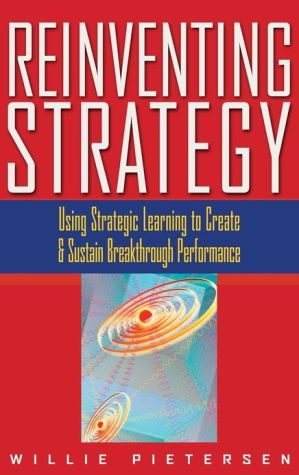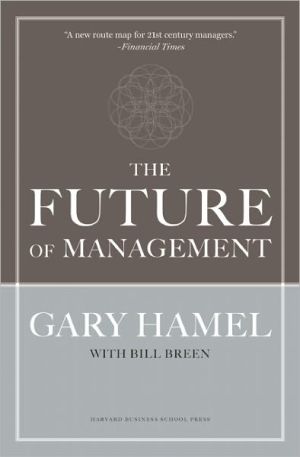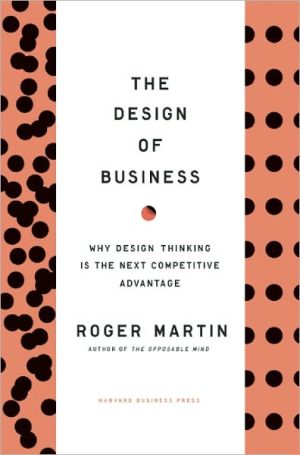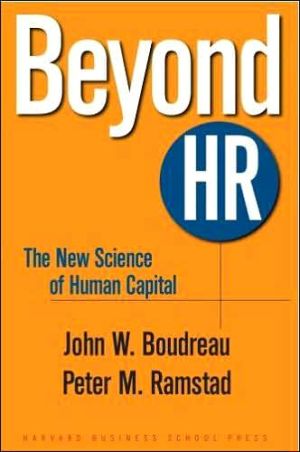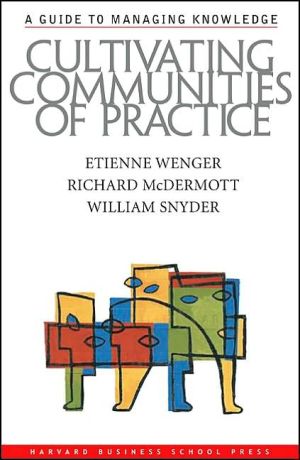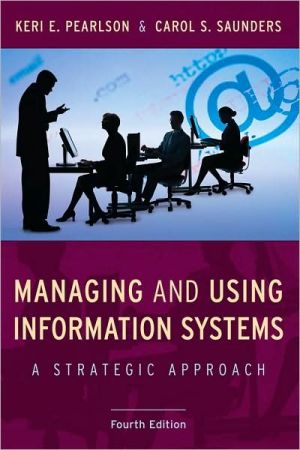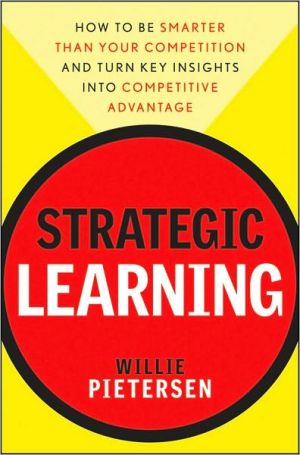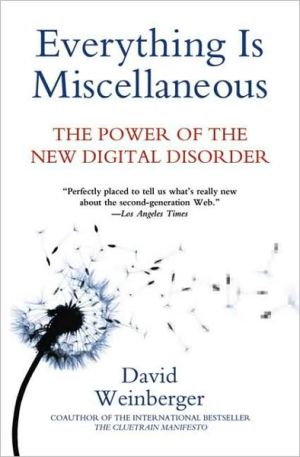Reinventing Strategy: Using Strategic Learning to Create and Sustain Breakthrough Performance
Advance Praise for Willie Pietersen's Reinventing Strategy\ "With today's uncertainties, a sound strategy is not enough for business success. Effective, dynamic leadership is more important than ever in piloting an organization through a constantly shifting environment. In this timely book, Willie Pietersen reveals the profound connections between strategy and leadership, and offers a proven method for strengthening both." -Jim Copeland, Chief Executive Officer, Deloitte & Touche LLP,...
Search in google:
Reinventing StrategyAre you prepared to conquer the single greatest leadership challenge facing any corporate executive in the new economy? To compete in today's ever-shifting landscape, you need to drive your company beyond one-time improvement and achieve continual adaptation and renewal. In Reinventing Strategy, the creator of the Strategic Learning process shows how this proven system enables business leaders to repeatedly develop superior insights and transform them into winning strategies.Unlike many books on business strategy, this completely practical guide combines clear explanations of what your company needs to do with a unique four-step process for getting it done: Learn, Focus, Align, Execute. Refreshingly concrete examples show you how to use Strategic Learning to consistently outthink, outmaneuver, and outperform your competition.This comprehensive guide features dozens of real-world stories from major companies such as Seagram, Unilever, Sony, and more, vividly illustrating Strategic Learning's effectiveness in do-or-die situations. It also demonstrates practical procedures for mobilizing an organization to capture and act on insights, transform corporate culture, and overcome resistance to change.The time to adapt and innovate is before change is thrust upon you. Reinventing Strategy supplies the leadership tools and techniques your company needs to stay ahead of the curve and achieve superior performance while everyone else is struggling to cope with unexpected shifts in the competitive environment. No one who leads an organization-or aspires to do so-can afford to ignore this compelling book.
Reinventing Strategy\ Using Strategic Learning to Create and Sustain Breakthrough Performance \ \ By Willie Pietersen \ John Wiley & Sons\ ISBN: 0-471-06190-5 \ \ \ Chapter One\ The New Playing Field \ Running a business today is harder than ever before. Why? Because of the speed and complexity of change in the so-called new economy. By "new economy," I don't simply mean the high-tech sector or the dot-com bubble; the phrase has taken on a much wider meaning than that. It refers to the new rules of competition and how they are affecting everyone, everywhere. Indeed, the most profound effects of the new economy are being felt in large, well-established, old-economy businesses.\ To succeed in the new economy there are three questions every business leader must be able to answer.\ The Three Leadership Questions in the New Economy]\ 1. What is the environment in which our organization must compete and win? What are the underlying forces that are driving our industry in the new economy? We need to understand the environment in which leaders must lead. Until we have achieved insights into these shifts, we cannot answer the next question.\ 2. What are those few things our organization must do outstandingly well to win and go on winning in this environment? Have the rules of effective leadership changed in the new economy? What are the key things that leaders must do to drive success in their organizations?\ 3. How willwe mobilize our organization to implement these things faster and better than our competitors? Knowing what to do is important, but that will never be enough to put you in front. To win, you must also know how to do it. You must be able to move beyond the rhetoric and actually implement your strategy. As Henry Ford put it, "You can't build a reputation on what you're going to do."\ This book aims to answer all three of these questions. Let's begin with the first question: What is happening in today's business environment?\ It is a leader's first duty to understand the field the company is playing on. Obvious? Maybe. But many executives simply throw up their hands and say, "The market is complex and changing fast," and leave it at that. That's not good enough. One of the most important roles of today's business leader is to be chief sense maker for his or her organization-the person to whom others look for a clear understanding of the competitive environment on which a sound winning strategy can be based.\ To create a winning strategy, we must understand better than our competitors the forces driving the new economy, how they affect us, and how we can use them to our advantage. Doing this is the first stage of Strategic Learning-an insight-generating process called the situation analysis (see Chapter 5). To gain such insights, every company will have to scan and interpret its particular environment. There are, however, a number of universal forces-such as the Internet, globalization, deregulation and privatization, convergence, and disintermediation-that are radically altering the way all business is conducted today (see Figure 1.1). While each of these forces is distinct, they all interact with one another. Consider the Internet and globalization, the two most powerful forces of change at work today: The Internet connects people and promotes globalization, while globalization of the marketplace pushes people to connect and do business via the Internet. When we step back to consider these major discontinuities as parts of a larger, epochal transition, then we begin to understand how they affect our businesses and what we must do about it.\ "New economy" has become a nearly ubiquitous buzzword. While buzzwords can help us get a quick handle on things, they can also become a crutch, a substitute for real thought. In the pages that follow, I attempt to define the significance of the new economy by explaining the nature of the changes taking place around the world at the dawn of the twenty-first century. Rather than offering a long, bland description of these forces-forces that you are probably aware of-I have tried to distill the chief consequences of what we call the new economy and how the changes underway have altered the rules of competition. Only with this understanding can business leaders understand and meet the challenges they now face.\ Understanding the New Economy\ As the economist Joseph Schumpeter noted, capitalism is largely a process of "creative destruction": One era creates new tools and methods that supersede and destroy those of the previous era. As with the agricultural revolution and the industrial revolution, the changes being wrought by the new economy today-most notably the Internet-are not simply extensions of the old ways; they are significant, revolutionary breaks from the past. Today we are in the information age, which has seen the most rapid and complex change of all. At the dawn of the twenty-first century, we are moving from asset-based to knowledge-based competition.\ Sense Making in the Information Age\ Knowledge is power, the old saying goes. But in the so-called information age, the distinction between true knowledge and mere information has become more important than ever before. Thanks to modern technologies such as the digital computer, electronic communications, and especially the Internet, information has become a commodity, and a cheap one at that. As the world becomes networked, mere facts are now more mobile than ever before-they can come from anywhere and go to anywhere almost instantaneously. The result is that information is becoming an abundant, cheap, and rapidly transferable commodity.\ But despite the flood of information in which we are all daily immersed, true knowledge is as rare and valuable as ever-perhaps more so. Knowledge makes distinctions among kinds of information, winnowing the valuable, practical, and important from the useless, unnecessary, and insignificant. In an age when everyone has instant access to infinite information, sense making-the ability to turn floods of information into real knowledge-has become today's scarcest and most valuable resource and the key leverage point for value creation.\ A company's primary source of wealth is therefore derived from its insights, knowledge, and ideas. Its success depends on how it leverages its intellectual capital. But leveraging intellect is quite different from leveraging assets, and the business world is still coming to terms with what that means.\ Power Shift\ For the majority of executives I come in contact with, the Internet is the big question today-a huge, knotty issue that many feel they are not properly addressing. On the one hand, the Internet is simply a tool; it happens to be a very fast means of distributing information-from one desk to the next, or across town, or around the world. On the other hand, the Internet ruthlessly squeezes out inefficiency. Indeed, the Internet is shaking up entire business categories, forcing companies to reinvent themselves and enabling ordinary individuals to accomplish extraordinary tasks.\ The Internet is a double-edged sword. It has shifted the balance of power from sellers to buyers, even as it has given sellers better tools to find and serve buyers. One result is that buyers now have a much wider range of choices and lower switching costs than ever before, which has created a fiercely competitive environment, one in which innovation is the key to success.\ The most revolutionary aspect of the Internet is that it gives virtually everybody access to the same information. It is this transparency that has caused the shift in power from sellers to buyers-a massive, revolutionary change, which puts a premium on knowledge-based services rather than on products.\ This power shift is upending many established relationships. Consider the balance of power between doctor and patient, for example. Traditionally, doctors have been the keepers of specialized knowledge (a form of power), while patients have been their supplicants. Today, however, patients can research their conditions on the Internet, learn about possible treatments, and scour multiple web sites for resources; when they arrive at their doctors' offices, they may know more about what ails them than their doctors do. This puts pressure on doctors to provide extra service in order to retain their patients.\ The Internet has also afforded producers much better tools to find and serve customers. Indeed, a number of traditional companies have used the Internet to reinvent themselves and make their core competencies the best in the world. Perhaps the best example of this is General Electric. Traditionally a paradigm of the old, asset-based economy, GE is now a leader in the information age. Under former CEO Jack Welch, the company reconceived itself as a "learning laboratory" that uses the Internet to provide efficient products and services to its customers.\ When GE sold a jet engine in the old days, it would sign its client up for a maintenance program that produced a steady annuity. Today, GE Engine Services offers customers like Southwest Airlines "power by the hour," an online service that monitors engine performance in flight and tracks all maintenance and repair data in real time. Customers use GE Aircraft's Customer Web Center to purchase spare parts and to access technical publications and warranty records. Airlines also gain access to online remote diagnostic systems that allow GE engineers to pinpoint engine problems from thousands of miles away without having to make on-site visits. "That's an information-based service as much as a product," Welch told Fortune magazine. "I think it's a better game."\ Although some old-economy stalwarts might like to think that the dot-com shakeout of the past two years signals an end for the new economy, in fact the new economy is still in its infancy. Historically, new technologies have always spawned cycles of rapid experimentation led by start-up players, followed by periods of absorption by those mainstream firms that survive the discontinuity. As GE's ongoing reinvention suggests, the Internet is no longer a business fad reserved for entrepreneurs. It is a massive enabler, every bit as profound in its effects as the introduction of electrical power was around the turn of the last century.\ Margin Squeeze\ The unprecedented efficiency of the Internet is driving down purchasing costs for all kinds of goods and services. This is true in both consumer and B2B (business-to-business) markets. For an example of the former, consider CNET, the Web-based service that offers instantaneous price comparisons among hundreds of suppliers of computers, cameras, stereo equipment, and other high-tech products. The effect is to make it extremely hard to compete for business in these categories unless you're willing to match the lowest price in the market.\ Similar processes are at work in the B2B arena. Companies in almost every business are using the Internet to connect themselves closely with suppliers around the world, making it fast and easy to buy raw materials, machine parts, or manufactured equipment in just the amounts needed at the lowest possible cost. The effect is the same: to drive prices down to rock-bottom levels.\ The inevitable result is a margin squeeze that is steadily moving up the supply chain. The personal computer (PC) maker that is forced to sell its products at bare-bones prices can do so only by demanding the lowest possible prices from its suppliers-chip makers, fabricators of plastic cases and electrical wiring, makers of cardboard shipping cartons, and so on. These companies, in turn, must maximize their own efficiencies while putting the squeeze on those who supply them with raw materials, manufacturing services, and so forth. Little by little, excess costs are being wrung out of the entire system. Thus, sellers seldom get to keep the benefits of the lower costs; they must be passed on to buyers in the form of lower prices if the sellers hope to remain in the game.\ The first challenge for any company doing business in this merciless environment: to improve your own efficiencies fast enough to maintain your profit margins-and to keep from being squeezed to death. But such improvement alone merely allows you to remain in the game. You'll never save your way to success. To win, you must go beyond cost cutting to produce genuine strategic innovation that creates new and better ways of serving customers.\ The Resurgence of Brands\ As a result of these forces, the battle for the customer has grown much more intense. The big question in customers' minds is: Whom do I trust? The broad array of choices on the Internet can be liberating, but it can also be confusing, and increasingly customers are looking for guidance.\ One consequence of this that some may find surprising is a resurgence in the importance of brands. Robert Reich, the former secretary of labor, points out in his book The Future of Success that the "distribution oligopolies" that dominated the first half of the twentieth century are now giving way to what he calls "oligopolies of trustworthiness." In the twenty-first century, superbrands like Walt Disney are becoming our guides to what is good and trustworthy for a wide range of products and services. Such companies are increasingly filling the role of knowledge brokers for consumer audiences. They can prescreen information for us; they can function as a catalog or a showroom; they can subcontract, or forge partnerships with others in the value chain. Many consider Disney, for example, their trusted guide to all sorts of family entertainment, not all of which it directly produces or controls.\ Multichannel Marketplaces\ As an instantaneous, incredibly flexible medium for interactive communication, the Internet is opening up new channels for sales, marketing, and customer service. Consequently, distribution networks in industry after industry are being reshaped. In many industries, the challenge will be to move from a single-channel to a multichannel approach. Hence, the rush to launch online sales and marketing venues to complement traditional retail outlets-the so-called "clicks and bricks" strategy.\ But here's the rub: To remain competitive today while also preparing for tomorrow, it's not simply a question of getting out of one strategy and into another. Rather, you must decide how to maintain your existing business, your "installed base"-the existing customers, revenue stream, technological competencies, and other assets you've built up over the years that are still profitable but becoming obsolete-long enough to buy the time needed to adapt to a new model at the same time.\ \ Continues...\ \ \ \ Excerpted from Reinventing Strategy by Willie Pietersen Excerpted by permission.\ All rights reserved. No part of this excerpt may be reproduced or reprinted without permission in writing from the publisher.\ Excerpts are provided by Dial-A-Book Inc. solely for the personal use of visitors to this web site. \ \
Acknowledgments.Introduction: A Journey of Discovery.The New Playing Field.The Challenge of Change.The Search for an Answer.The Strategic Learning Process.Winning the Battle for Insight: Doing a Situation Analysis.Defining Your Focus.Aligning the Organization.Transforming the Culture.Overcoming Resistance to Change.Implementing and Experimenting.Strategic Learning as a Path to Personal Growth.Creating an Environment for Success.Index.
